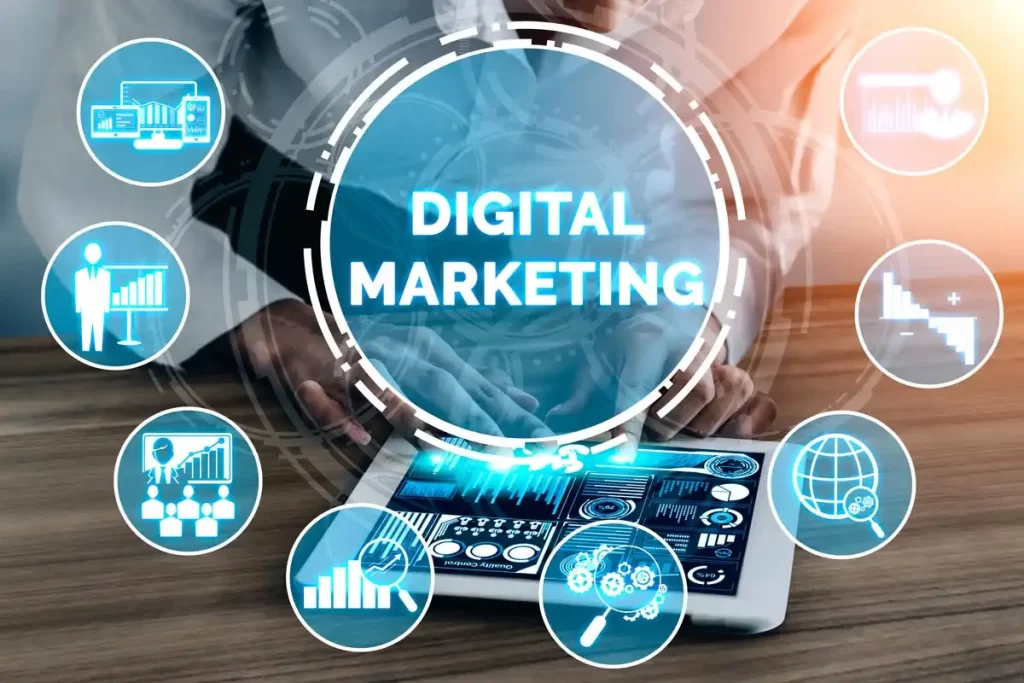How to Develop a Successful Digital Marketing Strategy

An actionable approach to digital marketing strategy would be essential for any business or agency to excel online because it involves establishing goals and objectives, and is capable of being carried out.
Strategy and tactics need to be distinguished. A strategy is an overarching concept — the plan you develop to meet your mission — while tactics are specific actions you may take to get there.
Identify Your Goals
A successful online or digital strategy really starts with having marketing goals. What do you want to achieve online? Setting goals provides focus for you and your team members, and allows the online activities to support overall business objectives. The best way to set your marketing goals is to do it by using SMART criteria, which means that your goals are: SPECIFIC (or tangible), what exactly you will accomplish; MEASURABLE (or meaningful), that you will be able to assign a concrete value to what you’re doing; ACTION-ORIENTED (or attainable), that you should be able to reasonably achieve it; REALISTIC (or realistic), that you will be able to explain why it’s attainable; and TIME-BOUND (or time-constrained), that you’ll be able to establish a target date for completion. An example of a SMART goal: drive more traffic to your website by 20 per cent or increase your lead generation through your site – both are measurable targets and realistic goals to achieve via your analytics (which is a lot better than wishy-washy ideas to ‘improve your bottom line’).
Determine Your Audience
You can only formulate a good digital marketing strategy if you direct your efforts towards the right audience, so the first step in your digital marketing plan should be the identification of your target market. You can figure out who your audience is by looking at their demographics poster: you can access numbers for age, gender and location from Google Analytics, who will give you data from the web visitors at your site. Secondly, social media is another priceless source of audience data. Use Facebook Insights or similar to get a better picture of things they like to do, how they behave and what they like.
Analyze Your Competition
To develop a winning digital marketing strategy, you need to constantly analyse competition. Not only can you understand what approaches are working, which ones are not, but also how you position your brand in the market. When that your direct competitors, those that sell similar offerings to your target audience, are just as important to consider as your indirect ones: those that are selling a similar offering to a different target market. Competitor analysis gives you an idea of what trends are taking place in your industry. But don’t instantly decide to start using the same techniques as your competition – because, although finding what works for others may be relatively easy, deciding if and how it would work for your business should be your decision, not theirs. Sometimes, standing out can be a great thing.
Create a Content Strategy
Content strategies are the roadmaps that teams use to plan, publish and promote content, and your strategy should have outlined, measurable, actionable goals and key results (OKRs) tied to your brand’s objectives and OKRs; as well as how those results will be measured and evaluated. Conduct some ‘spying’ (yes, this is copywriting parlance): what might they enjoy reading/watching/consuming, like blogs, infographics, a video or short TikToks? Your chosen KPI measurement strategy should also account for which KPIs are most important to achieving your goal – for instance, if that goal is driving traffic via SEO; whereas, if the goal is conversion, content with good call-to-actions may be more successful.
Create a Social Media Strategy
Digital marketing is one of the most useful initiatives for a company in any size: it can greatly increase the visibility on the internet and make your business more profitable by generating leads. Set goals and determine specific objectives. Goals are big-picture concepts; objectives can include more specific and measurable markers – ie, that you grow your social media following by 20 per cent in the course of three months: that would be one of your objectives. Develop a social media approach in line with your goals – say, paid sponsored social ads to boost follower figures or references to an Instagram channel in an influencer campaign to drive traffic to the Instagram page.
Create a PPC Strategy
Then comes up with digital marketing tactics that help fulfil your business goals and objectives: Choosing the right platforms.Depending on what your business objectives are, the most suitable platforms will differ (e.g. Facebook for eCommerce sales; LinkedIn for B2B brand awareness). The next immediate step is to construct appeal-driven ads with a persuasive message of the value proposition and brand differentiation. The final vital step is to monitor and modify campaigns. The data that the ads generate serves as a fuel for users’ creation for Google analytics audiences.
Create an Email Marketing Strategy
A good strategy of digital marketing is by using email marketing, an effective tool that helps to maintain customers and market sales or new release of products, where a well-written text were able to e received by many subscribers, consequently creating a higher clickthrough. Put your subscribers’ names in the subject line to boost open rates and send emails at times when your subscribers are more likely to open emails. Also, don’t forget to promote your email signup form through your social channels to encourage your list to grow. And don’t forget to make sure you include your links to all your channels within a welcome email.








